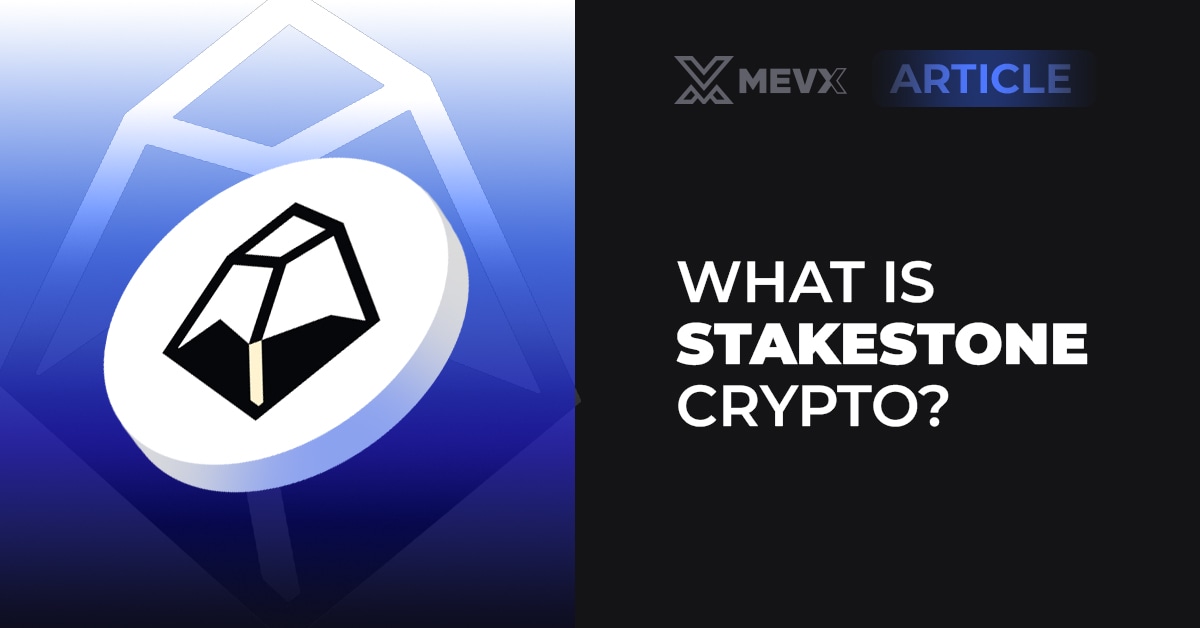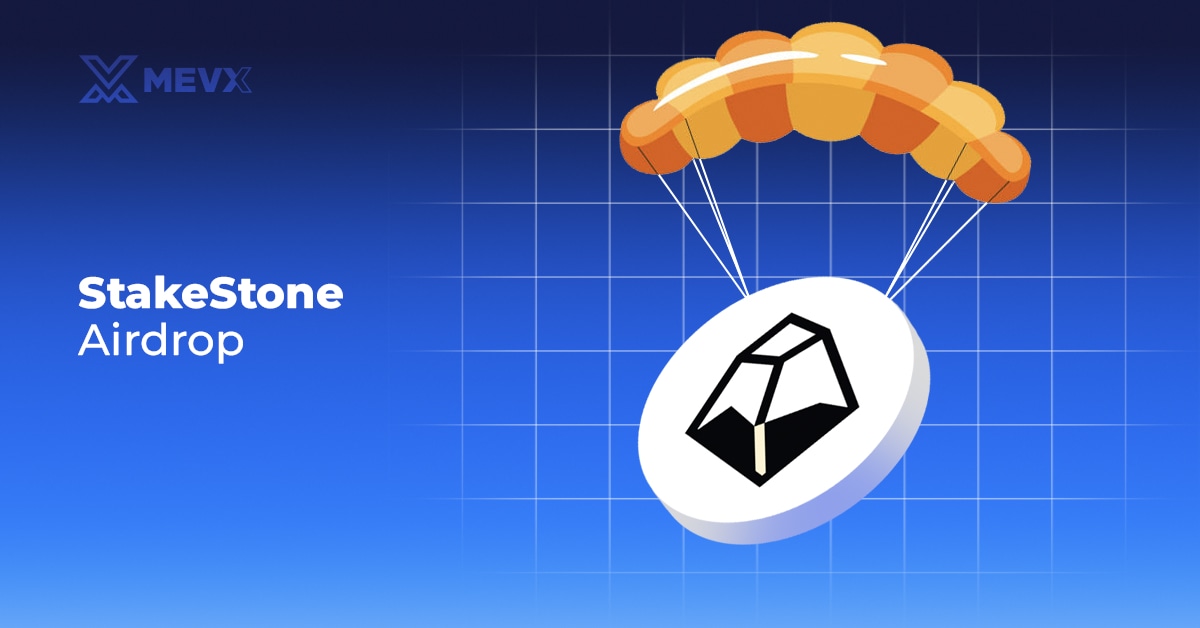Discover What is StakeStone Crypto – a groundbreaking omnichain liquidity protocol revolutionizing DeFi with flexible staking and yield generation. This guide explores StakeStone’s innovative features, tokenomics, airdrop opportunities, price insights, and more, offering a clear understanding of its role in the blockchain ecosystem.
What is StakeStone Crypto?
StakeStone is a DeFi protocol that leverages LayerZero technology to create Omnichain Fungible Tokens (OFTs), enabling seamless asset transfers across multiple blockchains, including Ethereum, BNB Chain, Arbitrum, Optimism, and more. Its primary mission is to address liquidity fragmentation by offering staking solutions that balance yield generation with asset flexibility. Unlike traditional staking, where assets are locked, StakeStone’s tokens—STONE, SBTC, and STONEBTC—can be used in DeFi applications like lending, trading, or providing liquidity on decentralized exchanges (DEXs).
The protocol’s flagship feature, Stone Vaults, allows users to deposit STONE tokens into pools to earn optimized yields or rewards like airdrops and points. Additionally, Stone.Pay simplifies cross-chain transaction fees, enhancing user experience. With over $22 million raised from top-tier investors like Binance Labs and Polychain Capital, StakeStone is positioned as a leader in omnichain DeFi innovation.

What is StakeStone Mining?
While StakeStone doesn’t involve traditional crypto mining (like Proof-of-Work), it offers a modern equivalent through staking and yield farming. Users can “mine” rewards by staking ETH or BTC to receive STONE, SBTC, or STONEBTC tokens, which are then deposited into Stone Vaults. These vaults employ the Optimizing Portfolio and Allocation Proposal (OPAP) mechanism to allocate assets across high-yield DeFi strategies, maximizing returns. This process, often referred to as “StakeStone mining,” allows users to earn passive income without sacrificing liquidity, making it a compelling alternative to conventional staking models.
For example, staking ETH yields STONE tokens, which can be used in DeFi protocols or held in vaults for additional rewards. The protocol’s adaptive staking network ensures yields are optimized based on market conditions, offering a dynamic approach to passive income generation.
StakeStone Tokenomics
The StakeStone tokenomics are designed to support the protocol’s long-term growth and incentivize user participation. Here’s a breakdown:
- Token: STO
- Total Supply: 1 billion STO
- Circulating Supply: 225.33 million STO (as of May 2025)
- Utility: STO powers governance through the OPAP mechanism, enabling community-driven yield optimization. It also supports Stone.Pay for cross-chain fee payments and unlocks premium features within the ecosystem.
- Distribution: While specific allocation details are not fully public, the Binance airdrop (1.5% of supply) indicates a focus on community rewards. Future token releases may be tied to staking incentives and partnerships.
The tokenomics reflect a balance between incentivizing adoption and ensuring protocol sustainability. However, the lack of detailed public information on vesting schedules or future emissions could be a concern for some investors. Transparency in this area will be critical as StakeStone scales.
StakeStone Airdrop – Opportunities for Users
Airdrops are a powerful tool for DeFi projects to incentivize adoption, and StakeStone is no exception. In May 2025, Binance announced a StakeStone airdrop of 15 million STO tokens (1.5% of the total supply) for users participating in its Simple Earn program with BNB. This initiative, paired with StakeStone’s integration into various ecosystems, signals ongoing opportunities for users to earn free tokens.
To participate in future StakeStone airdrops, users should:
- Stake assets on the official platform (app.stakestone.io).
- Join Stone Vaults to earn points and rewards.
- Follow StakeStone’s official Twitter and Discord for updates on campaigns and partnerships.
Airdrops not only reward early adopters but also boost the protocol’s visibility, making them a key driver of community growth.

What is StakeStone Price?
As of May 3, 2025, the StakeStone price for its native STO token is approximately $0.158, with a 24-hour trading volume of $50.23 million, according to CryptoRank.io. The token reached an all-time high (ATH) of $0.215 on May 3, 2025, and an all-time low (ATL) of $0.05717 on April 3, 2025. With a market capitalization of $35.69 million, STO represents a small but growing segment of the crypto market.
Price volatility is a common trait in DeFi tokens, and STO is no exception, experiencing a -7.48% drop in the last 24 hours as of May 3, 2025. Investors should monitor market trends and StakeStone’s partnerships, such as with MerlinLayer2 and Aria Protocol, which could drive future price appreciation. STO is available on major exchanges like Binance, Gate.io, and Bitget, with the STO/USDT pair dominating trading volume.
Why StakeStone Stands Out?
StakeStone’s unique value proposition lies in its ability to combine liquidity, yield, and cross-chain interoperability. Here are key reasons it’s gaining attention:
- Multichain Support: Operates on 16+ blockchains, including Ethereum, Arbitrum, and Optimism, ensuring broad accessibility.
- Innovative Products: STONE, SBTC, and STONEBTC cater to diverse DeFi use cases, from yield farming to stablecoin minting.
- Robust Security: Audited by Quantstamp, Slowmist, Secure3, and Veridise, minimizing smart contract risks.
- Strong Backing: Investments from Binance Labs, Polychain Capital, and Hashkey Capital signal confidence in its vision.
- LiquidityPad: A game-changer for blockchain ecosystems, enabling customized liquidity fundraising strategies.
Despite its strengths, StakeStone faces challenges, including a relatively inexperienced core team (except for its CMO, with prior roles at Binance and Bybit) and market-driven price volatility. Nonetheless, its 4.9/5 community rating from over 1,300 users underscores its growing appeal.
How to Get Started with StakeStone
Buy STO: Purchase STO on exchanges like Binance or Gate.io. Complete KYC verification and fund your account via bank transfer or credit card.
Add to MetaMask:
- STO contract: 0x1d88713b483a8e45cff0e5cd7c2e15e5fab4534d
- STONE contract: 0x7122985656e38bdc0302db86685bb972b145bd3c
- Import tokens manually or use CoinGecko’s auto-add feature.
Stake Assets: Visit app.stakestone.io, connect your MetaMask wallet, and stake ETH or BTC to receive STONE, SBTC, or STONEBTC. Deposit into Stone Vaults for additional yields.
Stay Informed: Join StakeStone’s Twitter, Discord, or blog for airdrop announcements and updates.
Risk Warning: Cryptocurrency investments carry high volatility and risk. Only invest what you can afford to lose, and conduct thorough research before participating.
StakeStone crypto is more than just a DeFi protocol—it’s a pioneering solution to liquidity fragmentation in the blockchain ecosystem. By offering flexible staking, omnichain compatibility, and innovative yield strategies, StakeStone is carving a niche in the competitive DeFi landscape.
Whether you’re interested in StakeStone mining, chasing a StakeStone airdrop, or analyzing StakeStone price and tokenomics, this protocol offers compelling opportunities for investors and DeFi enthusiasts alike. As it continues to forge partnerships and expand its ecosystem, StakeStone is poised to play a pivotal role in the future of decentralized finance
Share on Social Media:
